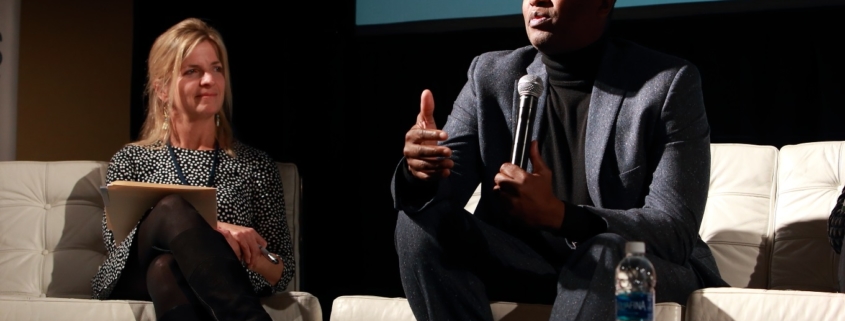Conference Notes: What We Learned at San Diego Grantmakers’ 2019 “The Power in Philanthropy”
Some of our team attended San Diego Grantmakers’ 2019 conference and grappled with how to deal with the inherent power that comes with being in a position to give resources to nonprofits. This dynamic is one thing to realize and another to address. When we’re trying to make our funds go the furthest, how we’re giving money away can be as important as where we give it. The day included panel and keynote speakers who all shared different perspectives on what distributing power can achieve. Here are five takeaways from our team after a day of considering how we can be more mindful of this dynamic, distribute that influence for more good, and grow and share our power.
“The Skillman Foundation’s CEO Tonya Allen reminded us that our grantmaking strategies have to create change, not just satisfy a requirement. Beyond that, we can use more than just economic capital. We can wield our power in other ways to advance the impact of our funding.” – Cassandra
“Professor john a. powell calls for our strategies to support co-creating spaces for belonging in the communities we serve. Through this perspective, my role within the Impact Cubed as an organization moves from simply processing grants and donations to actively participating in the redemptive work of making our community a home for everyone. “ – Mitchell
“Khalid Alexander from the Social Equity Collaborative Fund urged us to invite the people we’re funding into the room with us. We can’t make decisions for communities when they aren’t involved in the process. We have the opportunity to share our power with them so that they can make funding decisions for themselves.” – Jordan
“A panel of millennials engaged in philanthropy spoke candidly about their life experiences with power – surviving difficult childhoods when they didn’t have it, seeing its effects from afar, gaining it with life-changing results, and needing more of it to change their own communities firsthand. These future-oriented perspectives urged us to change our practices around giving to share influence. This provoked a question between other conference attendees: is training nonprofits to work within philanthropy’s culture and norms is akin to coaching all people to adopt more traditionally masculine qualities to advance professionally? How can nonprofits and philanthropy define best practice together?” – Jessica
“While discussing wielding power to create equity change, James Head, President & CEO of the East Bay Community Foundation encouraged grant makers to transform their institutions to be more responsive to the community. This includes assessing internal practices, such as compensation, benefits, employee mentoring programs, and employee resource groups, through a social justice lens to create opportunities for organizational and individual learning and growth. By restructuring financial, social, and human capital to support movements, organizations have an opportunity to transform what community advocacy work means and work towards a path of building a justice-focused identity. I appreciated this critical reminder that social justice cannot be achieved at the expense of others.” – Vanessa
Here are more resources from the San Diego Grantmakers Conference, including National Council for Responsive Philanthropy’s Power Moves tool and session notes.
Article Image: San Diego Grantmakers. All Rights Reserved.

 San Diego Grantmakers 2019
San Diego Grantmakers 2019
